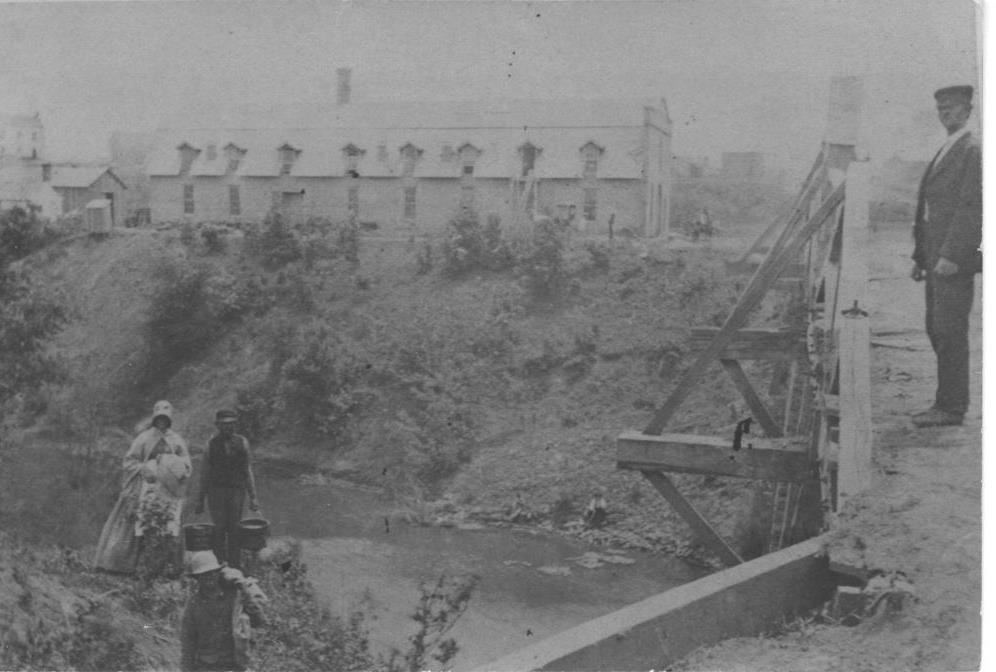

Waterways - Past, Present & Future - Marmaton River, Mill Creek & Buck Run
Throughout history the Marmaton River, Mill Creek, and Buck Run have helped to sustain the life of Fort Scott and the surrounding area. Before the first settlers arrived in the early 1800s, the Osage Indians established their spring and fall camps along the banks of the Marmaton River and used its water on their way to and from their hunting grounds in what is now central Kansas.
From 1842-1853 the U.S. Army constructed and occupied a fort on the bluff overlooking the south bank of the Marmaton River as part of the “Permanent Indian Frontier.” One of the main reasons the site was selected for a fort was that the basic building materials of timber, water, and stone were available along the banks of the Marmaton River. A water-powered sawmill was also erected on the south bank of Mill Creek that produced walnut and oak lumber for many of the fort buildings. The Marmaton River was also used to nourish the livestock, vegetable gardens, and residents of the fort. The fish from the river enhanced the plain military diets of the soldiers.
On December 7, 1869, the Marmaton River became the water source to help power the steam locomotives of the Missouri River, Fort Scott & Gulf Railroad.
In 1855, the U.S. Government sold all of the fort buildings at a public auction and they became the nucleus of the town of Fort Scott. Fort Scott’s waterways provided the power for sawmills, iron foundries, brick kilns, flour and gristmills, a pottery, a glassworks shop, utility power plants, and a water pumping station. The waterways also supplied the ice for commercial icehouses. On December 7, 1869, the Marmaton River became the water source to help power the steam locomotives of the Missouri River, Fort Scott & Gulf Railroad. The first railroad was joined by the Missouri, Kansas & Texas Railroad in 1871 and the Missouri Pacific Railroad in 1887. All of these railroads continued to use water from the Marmaton River for their workshops and steam locomotives. This continued until the 1950s when the steam locomotives were replaced with diesel engines.
On various occasions from 1844 to the present day, the Fort Scott waterways have been severely flooded by excessive spring and fall rains. This flooding has resulted in the destruction of many buildings, homes, and agricultural crops worth millions of dollars. However, for the past 20 years, the Marmaton River watershed has constructed a series of reservoirs that act as high water buffers to assist in reducing any serious devastation caused by the flooding of Fort Scott’s waterways. Today and for the foreseeable future the city of Fort Scott is still using the Marmaton River and its source for residential, industrial, and municipal water.
Article contributed by the Fort Scott Area Chamber of Commerce.
Image courtesy of Don Miller.



